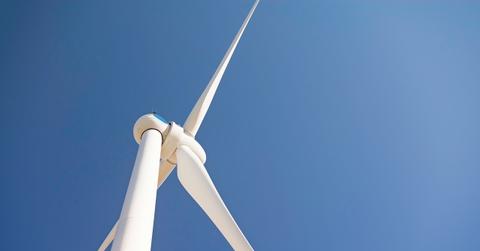Germans Use So Much Wind Energy, Their Power Prices Went Negative
Negative power rates occur when too much energy is generated by renewable sources and in order to keep the grid stable, consumers are paid to use it.
Updated Nov. 19 2020, 9:39 p.m. ET
Without having proper storage on the electrical grid for renewable energy, there’s been an recurring issue of generating too much of it. For example, last year, California had too much power from solar energy and needed to pay neighboring states to use it. Something similar happened over Christmas day in Germany.
How did this happen? On Christmas Eve and early into the next day, consumers made up to $60 US per megawatt-hour to use energy. These negative rates occur when too much power is generated from renewables and there’s a low demand for it.
Solar and wind generation is wildly inconsistent, with a lot of it based on the season. For example, Germany expects wind turbines to produce around 12 percent of overall power, but that number can significantly rise if there’s major winds. With more capacity being added all the time, it can supply far more energy than anticipated.
Germany alone has spent over $200 billion on the renewable industry in the last 20 years. Since fossil fuel can’t shut down and restart easily, it’s better for the exchange to pay consumers. That’s now happened over 100 times alone in 2017, which is more frequent than other European countries have seen.
One solution has been to sell the power to neighboring countries, similar to what California has done when they have a surplus of solar generation. However, that’s harder to maintain when these instances become longer. During a weekend in October, Germany achieved negative rates for 31 straight hours.
“[We] now have technology that cannot produce according to the demand, but is producing according to the weather,” Tobias Kurth, managing director of Energy Brainpool, told the New York Times. “[This is one] of the key challenges in the whole transition of the energy market to renewable power.”
Battery storage is ultimately the ideal upcoming solution, as we’ve seen Tesla’s Powerpacks keep South Australia’s electrical grid stabilized. The technology still needs to be improved upon to handle bigger grids, but it’s becoming cheaper to install. Until that’s available, perhaps the best way to relieve stress on these grids is to promote using more power.
We’ve been tailored to use as little energy as possible, such as turning off lights and TVs when not in the same room or at certain times of the day. Renewable energy generation is changing that mindset. Perhaps Germany’s energy companies can promote specific times for people to use higher energy tasks, like running washing machines or charging electric cars, when energy costs are low.

